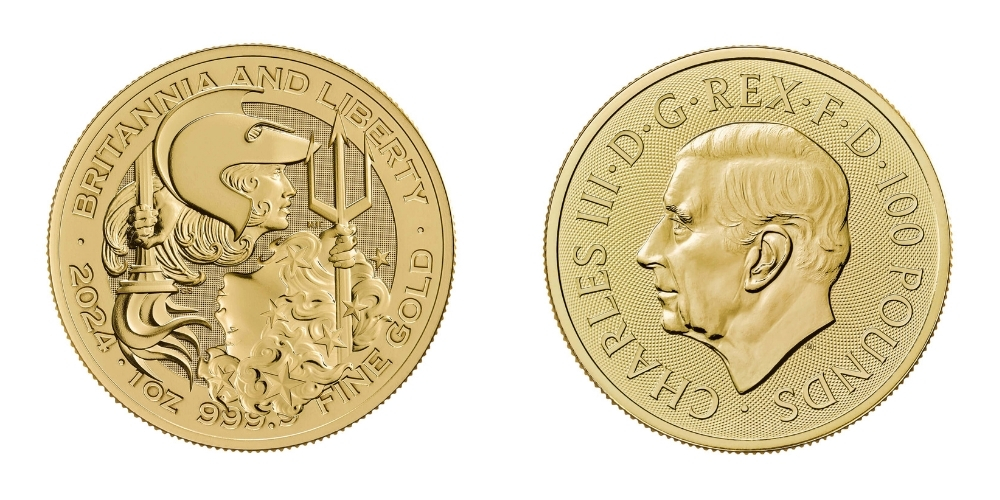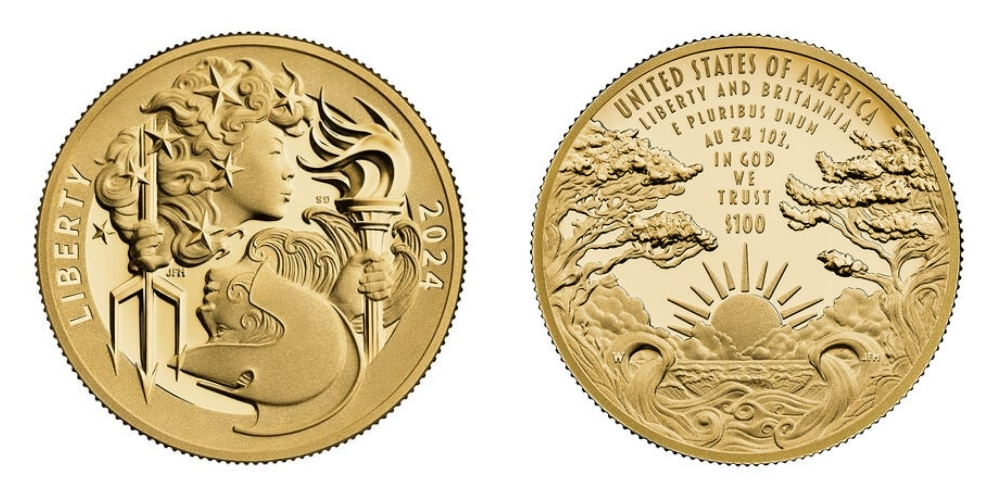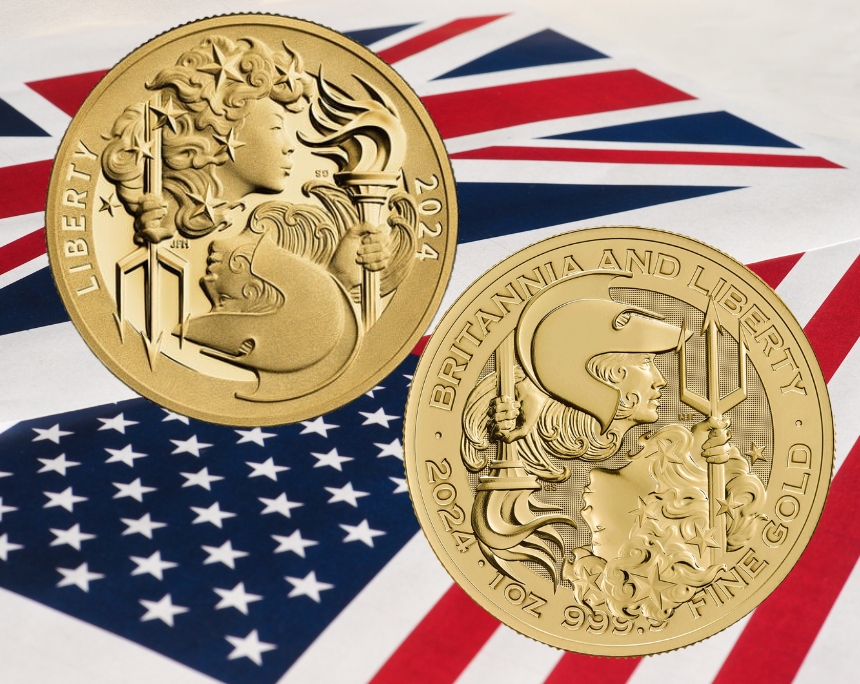Two Powerful Women – a Premiere in Gold and Silver
by Sebastian Wieschowski, translated by Maike Meßmann
Usually, the British Royal Mint and the United States Mint are competitors in the market for precious metal and bullion coins. Both of them established their own investment products with the Britannia and the American Eagle. However, now two of the world’s largest and oldest mints teamed up to create a single coin that combines two of the best-known coin motifs in human history: Lady Liberty and Britannia. While these two powerful women of the numismatic world will be depicted on gold and silver commemorative and bullion coins in Great Britain, the USA will present them on a silver medal and a gold commemorative coin.
The joint coin design presents allegorical depictions of Lady Liberty and Britannia as profile portraits, with Lady Liberty carrying a torch and decorated with stars, while Britannia wields a trident and wears a Corinthian helmet. Whereas Britannia is placed in the upper part of the coin on the British issue with a circumscription reading “Britannia and Liberty” as well as the year, weight and the precious metal content, the motif was rotated by 180 degrees for the US version and only shows the legend “Liberty” as well as the year.

The Royal Mint issues the joint coin for collectors and investors as gold and silver versions. Photo: Royal Mint
For the first time in the history of both mints, the Chief Engravers of the United States Mint, Joseph Menna, and the Royal Mint, Gordon Summers, created a joint coin design – setting a numismatic monument to both Lady Liberty and Britannia. Britannia appeared on Roman coins as early as around 119 AD during the reign of Emperor Hadrian, and Lady Liberty has been an integral part of US coinage since the founding of the United States. Since the 1980s, both have been acting as numismatic ambassadors of their respective nations in the bullion coin market: the American Eagle has been issued since 1986 featuring the bald eagle and Lady Liberty, while Britannia gold coins first entered the market one year later.

In the United States, Lady Liberty and Britannia were immortalised on a gold coin and a silver medal. Photo: United States Mint
And there is another parallel between Britannia and Lady Liberty: as modern bullion coins, both motifs replaced their respective predecessors in their countries of origin, which had previously been used by gold investors. In Great Britain, the Sovereign had been the most important gold trading coin since 1489, and the Double Eagle had been the dominant gold coin in the United States.



















